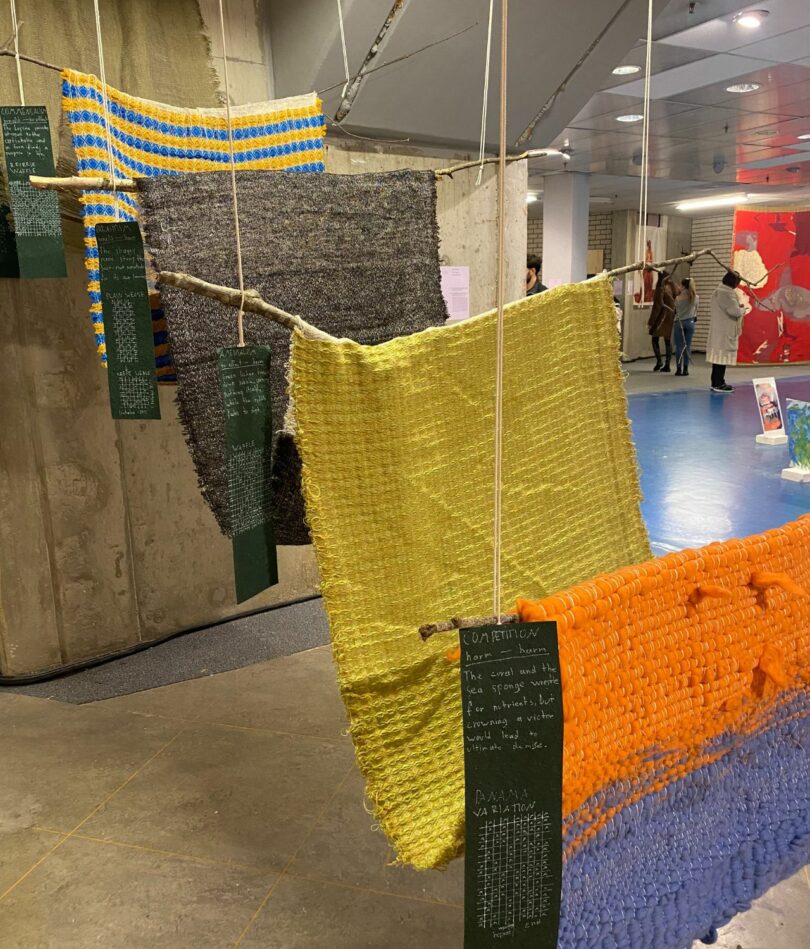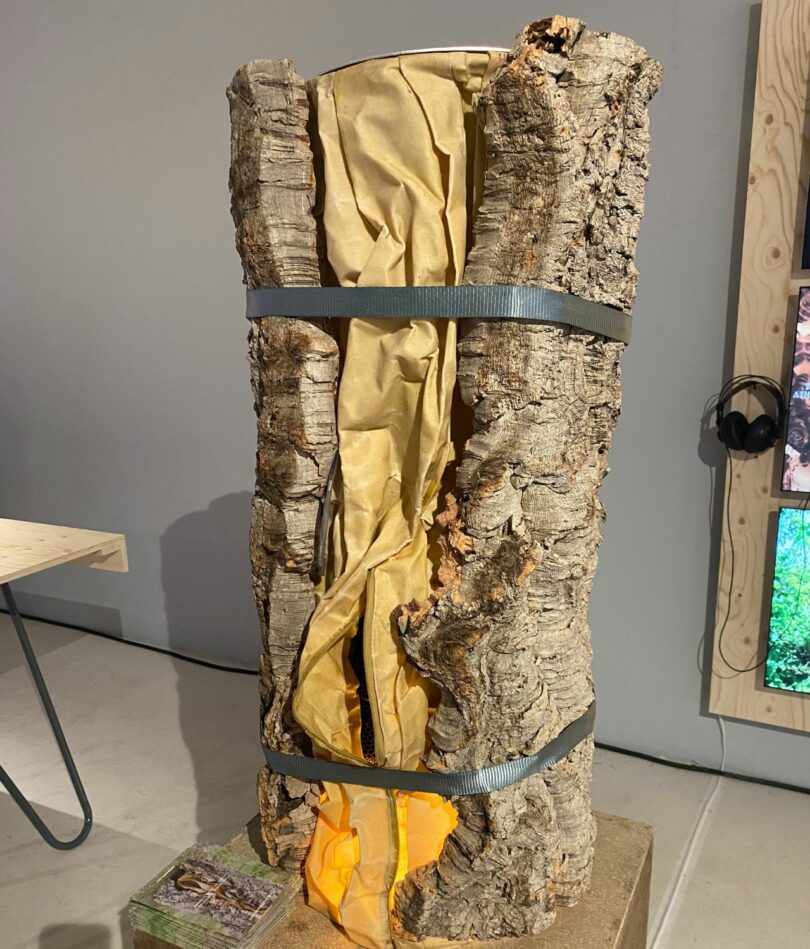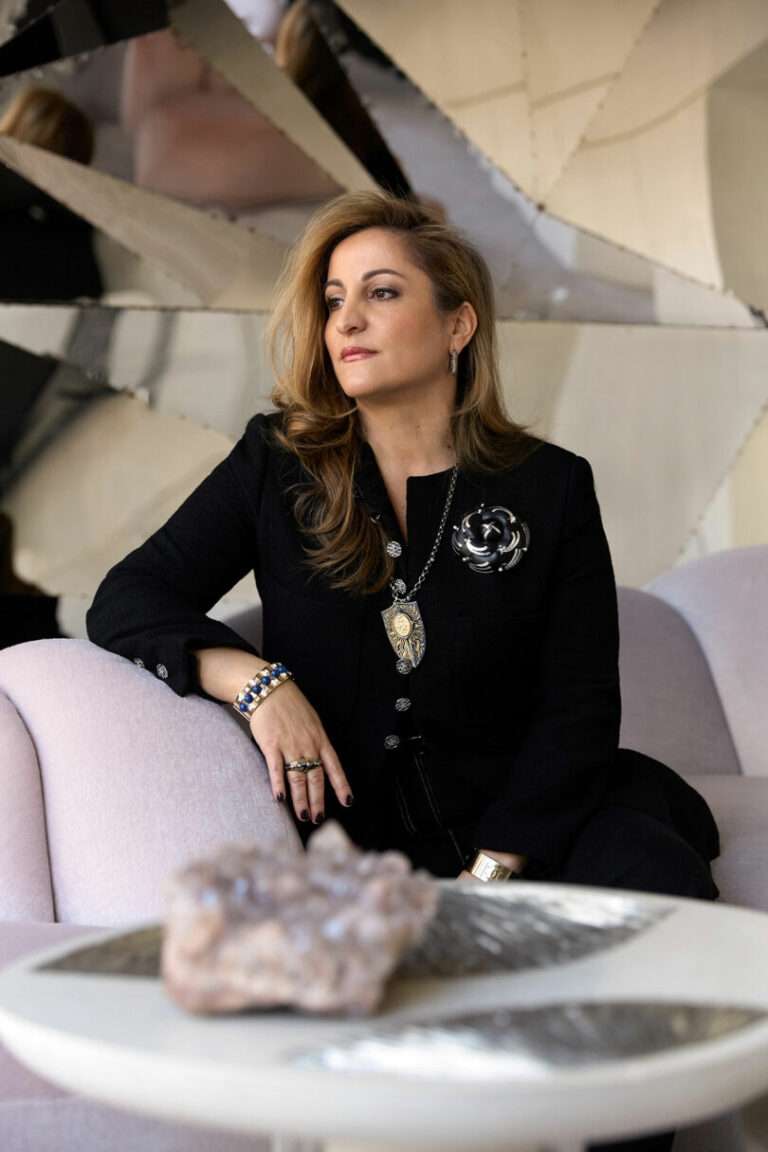The Design Academy Eindhoven graduate show is always a highlight of Dutch Design Week – and is in some ways the beating heart of the city’s creative scene, as many graduates choose to base their studios here after they have completed their studies.
The installation above is a typically thought-provoking piece called Gaia, How Are You Today? by Yufel Gao. He 3D-printed 92 terracotta pots, each designed using a day’s worth of weather data – the further from average the temperature, humidity, and wind speed, the more distorted the form to remind us that nature is not submissive or static, but chaotic and unyielding.

The Popping Sound of Bubble Wrap by Ilaria Cavaglia is made using discarded bubblewrap, styrofoam, and newspapers, drawing inspiration from the grotto aesthetic, to blur the line between the organic and the synthetic.

Ben van Kemenade designed Regenerated to house the timber collection of 86-year-old carpenter Riky van Dullerman. A freshly cut tree trunk provides the necessary humidity to prevent the older pieces from warping or cracking. The project reflects on caretaking, preserving the old while the young matures, and the transfer of knowledge between generations.

Michelle Akki Jonker’s The Mutuba Spirit is a mask made from traditional Ugandan bark cloth, a popular material before British colonialists demonized it in favor of cotton, creating a stigma that exists to this day. Michelle plays with iconography from the two cultures, using horns that, in European countries often symbolize the devil, but within her Ugandan heritage represent protection.

The Trunk Bunk by Henry K Wein is a portable tree house that can be towed along behind a bicycle enabling city folk to escape into nature and get some respite from the “always-on” world that so many of us now inhabit.

Paul Schaffer explored the symbiotic relationships between different organisms in The Warp of Symbiogenesis – in each piece, the warp represents one species and the weft another. There are five sections each representing the different types of symbiotic relationships in nature. Competition is defined as “harm-harm,” amensalism as “no effect-harm,” parasitism as “benefit–harm,” commensalism as “benefit-no effect,” and mutualism as “benefit-benefit.” The intention of the piece is to remind us of the interconnectedness of nature – and to include ourselves in that.

“Trash for you is treasure for me,” says Dario Erkelens. Abandoned Treasures is his collection of sculptural furniture made of abandoned material to explore the creative potential of what we throw away. Having grown up in rural Switzerland, where resources were carefully conserved and reused, he was shocked by what city dwellers routinely discard, and created this work to raise awareness of the wastefulness of our contemporary throwaway culture.

In Unsettling by Tanay Kandpal is a series of sculptures designed to celebrate the material culture of Jugaad – a Hindi term that refers to quick and improvised solutions – and explore the practice as a critique of Western industrial design’s failure to accommodate the unexpected.

The Swarm Shepherd was created by Pablo Bolumar Plata as the outcome of a collaborative design research methodology exploring an experimental approach to beekeeping. The hybrid device above incorporates wax canvas with substances that attract swarming bees to guide them to apiaries. Once a colony nests inside, the cork outer layer provides protection for their honeycomb.

Sien Entius’ Couture Objects explores her conflicted sense of identity as she transitioned from her background as a furniture maker into a design degree at Design Academy Eindhoven. She compared the craftsmanship in furniture making with tailoring by making outfits for cabinetry. They were displayed in front of posters advocating for the role of craft in design.

The Beauty of Time Passing by Toshihito Endo uses smart technology to mimic the way Japanese architecture plays with natural light, inviting a sense of nature into spaces without direct access to it – you can even match the light patterns to the weather outside.

Fedora Boonaert created a speculative archeological site that draws attention to the forgotten and knowingly marginalized oral knowledge of 16th-century midwives and “wise women” – particularly regarding female health and wellbeing – in the Low Countries. As male physicians replaced them, traditional women’s remedies were condemned as “witch-crafts” and wise women as witches, resulting in persecution and even death. Fedora hopes to address this historical injustice, the ramifications of which pervade modern-day medicine, through lectures and archeological expeditions of her site, as part of her project An Archeology of Women’s Wisdom.

In/Outside included a set of ephemeral domestic objects by Lison Guéguen made in accordance with the natural life cycles of the materials from which they are made. The installation explores the notion of mutually beneficial relationships with the more-than-human world and Lison talks about “borrowing” resources from the Earth, which immediately suggests a different approach than if we “take” them.
Photography by Katie Treggiden.





